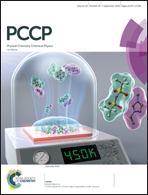Tracing feed-back driven exciton dynamics in molecular aggregates
Abstract
Perturbative treatment of excitation dynamics in molecular systems with respect to external interactions with a dissipative environment is extensively used for the description of excitation energy transfer and relaxation. However the simulated dynamics becomes sensitive to a specific representation basis set, which makes the conclusions obscure and questionable. We revisit questions of excitation creation patterns, coherent dynamics, relaxation and detection from a theoretical viewpoint, and demonstrate that a mixture of specific requirements should be met to observe coherent phenomena and incoherent decay processes. We discuss how intermixing of coherent components in relaxation phenomena is related to a non-perturbative regime of dynamics leading to nonlinear feed-back effects where bath relaxation also affects excitation wavepackets. We also discuss how bath equilibration causes local heating effects which is often neglected in numerical simulations. The parameters reflecting the complexity of the processes are related to excitation delocalization patterns in various basis representations. While these seem to be auxiliary nonobservable features, their evaluation allows better investigation of the physical behavior of quantum relaxation processes in molecular aggregate systems.

- This article is part of the themed collection: PCCP Perspectives


 Please wait while we load your content...
Please wait while we load your content...